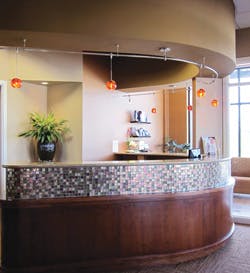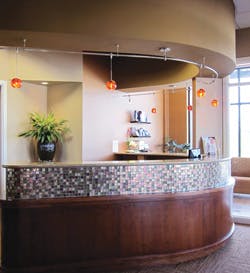100 years of expenses and profits
by Dianne Glasscoe Watterson, RDH, BS, MBA
Dear Readers,In honor of dental hygiene's 100-year anniversary, my column will address how the practice-management aspect of dental hygiene has evolved over time.
There are some immutable concepts in business that transcend time. In order to survive, a business must be able to generate profit. Not only must there be enough income to meet expenses, but profit is needed to keep the business afloat and provide the owner an income after all expenses have been satisfied. There will always be unexpected expenses, such as equipment repairs/purchases, necessary equipment upgrades, and facility expenses. Sofas and dental chairs do not last forever. One thing is for sure: when your outgoing expenses exceed your income, your upkeep will be your downfall. So the need to generate profit has not changed over the past 100 years.
Unless your practice is seriously mired in reduced-fee dentistry, the dental hygiene department should be profitable. Dental hygienists should be interested in bringing great value and profit to the practice by providing excellent preventive care and promoting the doctor's restorative dentistry.
Over the past 100 years, fees and costs of doing business have risen steadily. The primary expense categories for dental practices are dental supplies, lab fees, and staff salaries. Dental supplies are usually about 6% to 7% of collections; lab fees are anywhere from 7% to 10%; and staff salaries typically fall in the 20% to 24% range of collections.
------------------------------------------------
Other articles by Dianne Watterson
------------------------------------------------
One hundred years ago, cotton rolls could be purchased at the rate of 100 cotton rolls for less than a penny. Today, one cotton roll costs 7¢. One hundred years ago, the lab fee for a gold crown was about $2. Today, the lab fee is around $200. According to Andrea Matlak, an archivist with the ADA, the price of a gold crown 100 years ago was from $10 to $20. In 1972, when I began my dental career, the cost of a PFM crown was $100. Today, it is around $1,000. According to a book by Wilma E. Motley titled "History of the American Dental Hygienists' Association 1923-1982," a dental hygienist could expect to earn about $1.50 per day, or about $9 per week 100 years ago. Today, dental hygienists earn anywhere from $25 to $75 per hour, depending upon location. The hygienist made around $65 per day in 1972. Today, the average is around $300 per day.
What has changed in the dental hygiene world over the past 100 years? Since I haven't lived 100 years -- only 59 -- it's impossible for me to speculate all the way back to 1913. But I have been in dentistry for 41 years, and I've seen some amazing changes over that period of time, most notably in technology. Dental hygienists have wonderful intraoral cameras to use as communication tools with patients. We have computer systems that enable us to automate patient records, including periodontal charting. We have digital radiography that gives us better images with less radiation in half the time. We have power scalers with ultra-thin tips that allow us access into deep periodontal pockets for excellent debridement. We even have technology, called a dental endoscope that allows us to see down in those pockets. We have instruments that stay sharp for literally years (thanks, American Eagle) and magnification with headlights that make it possible for us to see things in the oral cavity that were impossible to visualize otherwise (thanks, Designs for Vision).
One hundred years ago, I wonder if dentists worried about open time in the schedule. In my first dental job 41 years ago at the front desk of a dental practice in Thomasville, N.C., there were days when I was happy that someone cancelled. We were scheduled out solidly for two months on the doctor's schedule and six months on the hygiene schedule. It was a dilemma when a patient called to report a broken tooth, because I had no open time in the schedule to bring him or her into the office. Hygiene was slammed as well. If someone cancelled, I had five more patients waiting in the wings for that time. We were overbooked, stressed out, and worn out by day's end. Downtime was NOT a problem. Were we happy? Not always.
Today, many practices have not seen a completely full schedule in a long time. Downtime in the hygiene schedule is particularly problematic, since hygiene typically drives the practice. Openings in the hygiene schedule eventually translate into openings in the doctor's schedule.
There were no dental insurance headaches 100 years ago. There was no mandated reduction of fees, but, no doubt, the dentist sometimes chose to give someone a discount. Dentists and hygienists provided care, and patients paid their bills with cash, or maybe chickens. Bartering was common, especially during the Depression years. I expect dentists did a good bit of charity dentistry.
I wonder if hygienists were ever called "loss leaders" in dental practices 100 years ago. I wonder if anybody checked to see if his or her wages exceeded the magic "one-third of production" metric that we often quote today.
Was a hygienist's greatest concern 100 years ago trying to keep her white uniform starched and clean and not catching her cute little nurse's cap in the belt-driven handpiece? Who knows?
We didn't know what caused periodontal disease and caries 100 years ago. We thought calculus caused periodontal disease. We began to treat periodontal disease as a chronic infection driven by microbes and a susceptible host only about 25 years ago.
Still, some things never change, notably human nature. One hundred years ago, people needed the same emotional supports they do today, including love, acceptance, and friendship. People still need education and training to perform meaningful work in order to pay their bills. People still have a need to be needed. Greed, superiority complexes, and unethical practices existed 100 years ago, just like today. Some things never change.
Some work precepts never change. Stay on time. Don't hurt the patient. Keep things clean. Develop rapport with the patient. Don't be late for work. Look professional. Help your coworkers. Keep your instruments sharp. Talk dentistry. Don't gossip.
Who can even begin to guess what the next 100 years will bring? Will there even be a profession called dental hygiene? My hope is that the next 100 years will see the profession move forward in ways that we never imagined. I'm just sorry that I will not be around to write about it! RDH
Warmly,
Dianne
Past RDH Issues

